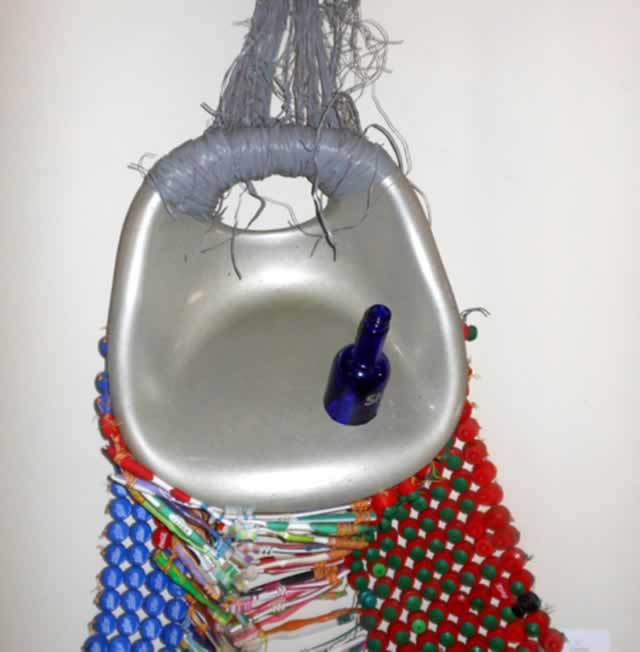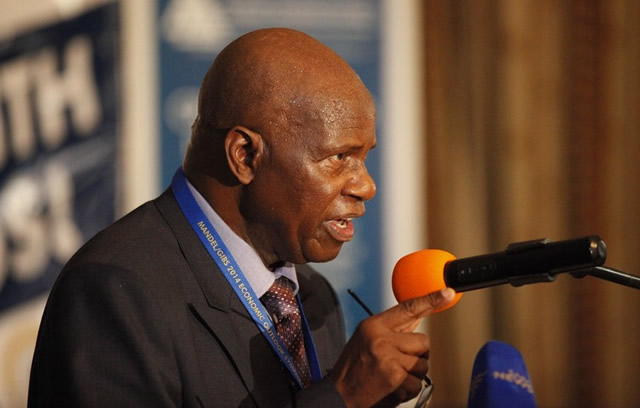The Collector’s Cocktail

Stephen Garan’anga Visual Art
Every serious artist has reserved opinion about the role of art critics on their work. Only they know why they create particular artworks using certain materials whichever way they want because it is personal, it is therapeutic, it makes what is concealed inside their complex minds be revealed.
They find it gratifying when enduring unbearable mental agony trying to conquer a resistant art piece. They get ecstatic when their minds travel immeasurable distances of treacherous terrain, move mountains, swim violent oceans, or disappear into thin air. It is what they want and it is what they do. How critics validate artists’ creativity that is personal and cannot be taught is a wonder.
But in parts of the art collectors’ world, their opinion is highly regarded and therefore should never be ignored by artists wanting to breakthrough into certain international art markets.
“Pay no attention to critics don’t even ignore them”, these are welcoming words on a ceiling beam at Koo Vha Creative Hub fine art gallery for the current exhibition.
The recently launched art gallery by elegant beer people Koo Vha Craft Beer at Newlands shopping centre had another exhibition opening with a unique presentation by city centre’s First Floor Gallery founder and director Valerie Kabov. The current multi-media show titled “Collectors’ Cocktail” has highly commendable work by some of the country’s super emerging practitioners. The exhibition aimed to assist the drive to establish a vibrant local art market had artist and collectors’ advisor amongst other things Kabov talking at length about how the international art market presume African contemporary art to be the next “big thing” and various tips on how to determine whether an art piece is worth the value it has been given or not.
She also elaborated on why it is crucial to have Zimbabwean art being collected mostly by local collectors.
This was very critical as most of our artworks which essentially reflect our way of life and are more meaningful to us end up being thousands of miles over various water bodies where their worthiness can only be assumptions.
When most of our credible or established artists get signed up by overseas galleries, their work and they are shipped to live as producers of very valuable end products who will spend their earnings with their families in what is often dubbed as second homes.
Presumably African contemporary art becomes the next collectors’ scramble, the foreign collectors and their countries will set to benefit the most as they will be in possession of the continent’s finest.
We will again be left to wonder why the wind is never seen. This will be highly regrettable if ever allowed to happen in this day and age whilst we stand aside and look.
Recording and reflecting our current victories and regrets without any prejudice is part of visual artists’ prerogative which compelled participants of the “Collectors’ Cocktail” to ensemble their creativity at the Creative Hub.
Some of the painful truth of our country’s current economic state was encoded powerfully by seasoned artist Moffat Takadiwa in his mixed media pieces titled “A Sit in the Sky” and “Mining What Is Not Mine”. “A Sit in the Sky” is a construction centred on a shiny grey hard plastic casted chair seat perfectly hollowed by Moffat more to the right side to fit in tightly an open sparkling deep blue half pint liquor bottle slightly tilted to the right from the vertical axis.
The left side of the seat dropping from underneath its curved edge is a carefully woven deep blue four column by several rows of plastic liquor bottle caps pattern attached to another dropping from the same underneath left edge coming to the right slightly past the middle of the front of the seat is a haphazardly woven several multi-coloured plastic tooth brush pattern with irregular gaps. Probably this testifies their pitiful state as they have been in several mouths of race and creed, brushing through various aged plaque and tasting all sorts of unbearable tooth paste.
Attached to the right of the tooth brushes is a multi column by various rows of green and red neatly woven hollowed dish washing liquid bottle caps pattern covering the partial front and the entirety of the right seat side. The bottom ends of all the three patterns are fluffy grey from the numerous thin data cables unceremoniously wound severally through an original casted hole at the top of the seatback bearing the weight to hang about half a meter from the wall.
The saddest part is that all the composition materials of this piece are our daily discarded objects from imported goods that we are depending on in our homes. An alarming huge percentage of all the goods in our country’s companies and shops are foreign. Everybody in the country is riding on a foreign tag especially in our urban life.
This begins with the garments we cover ourselves with, the cereal with milk one is feeding on in the morning, the mode of transport one travels on from one point to another, the cell phone that everybody has and its built up communications systems, the computers and internet that we are spending hours on at our workplaces and in our homes, the Sufflow or D’lite cooking oils being used to prepare food in various food outlets and homes and the whole way of living we are ensuing.
Who are we? What are our values now? Are we having an identity crisis?
Another reflection of our republic’s way of life by the same artist is on another mixed media hanging construction titled “Mining what is not mine”.
A sparkling stainless steel rim cover of a motor vehicle has numerous same sized orange and green and red flash lights used in the mines wound by myriad multi coloured thin electric cables right around the outer circumference.
Again all the components of the turning wheel are foreign, representing the equipment used in our mines. For a very long time who has been mining our minerals? What has been their practice when remitting proceeds due to the nation? Who has been smuggling our minerals?
Who have been the labourers and what has been their share on what they have been mining? Of all the big mines in the country how many are owned by native African Zimbabweans?
How many mines are pretended to be owned by native Zimbabweans including our recently redistributed farms and what is their share? Of all the few companies and many shops in Zimbabwe how many are locally owned?
The show has other interesting artworks in other media which include painting, sculpture and card printing which has such works as “Superficial values” and “Remembering Chi” by Franklin Dzingai.
Other participants of the art exhibition include Wallen Mapondera, Terence Musekiwa, Mavis Tauzeni, Option Nyahunzvi and Wycliffe Mundopa.
The show will shut down its curtains to the public in mid-August 2014.










Comments